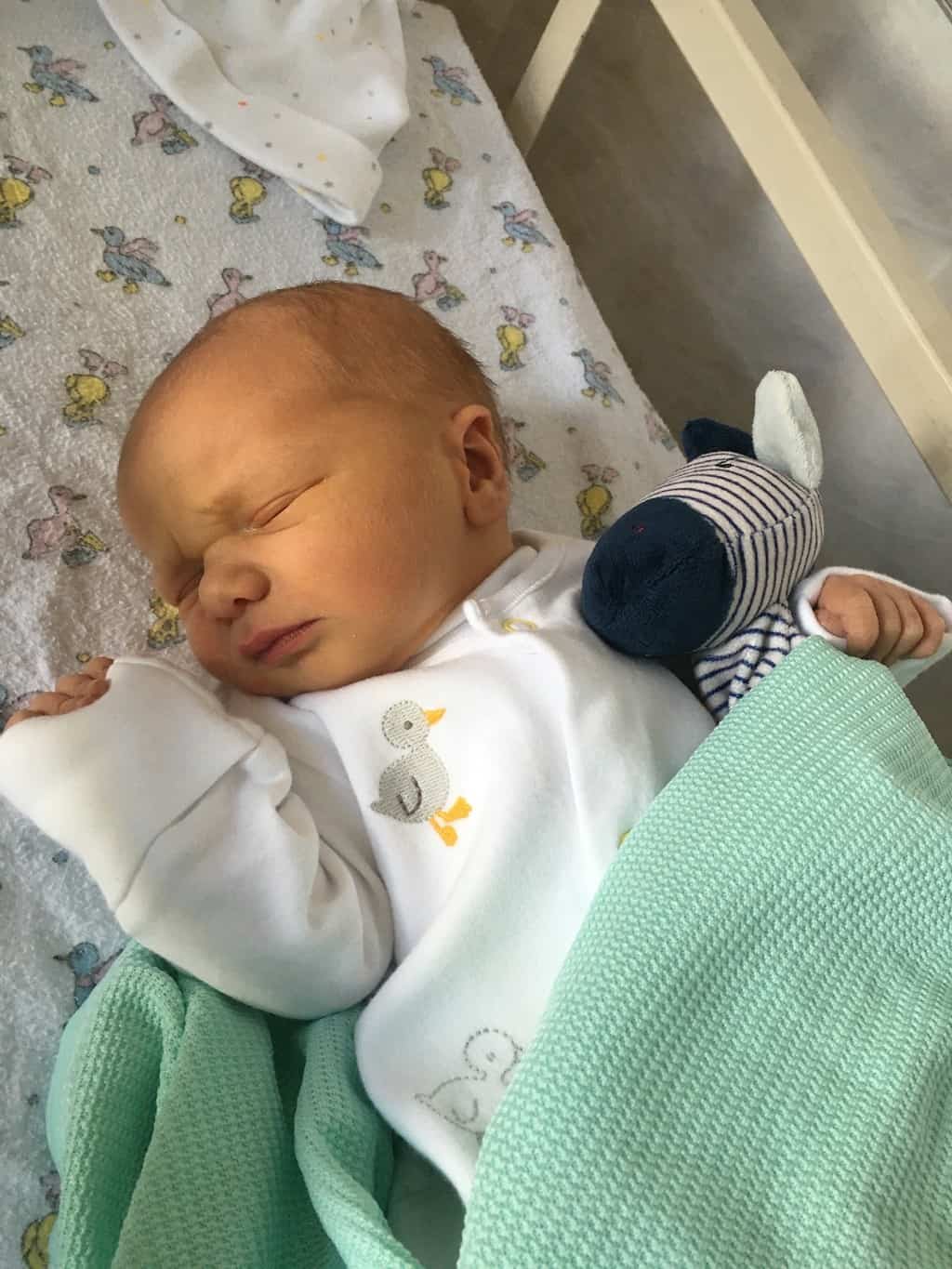Factsheet – Neonatal Jaundice
Written by Maria Kiriaki Ntagianta
Student Midwife, Greece.
Instagram @maria.ntagianta
Summary
This fact sheet provides a comprehensive summary on the evidence around neonatal jaundice. This document is aiming to help parents understand how jaundice is caused, what are the treatments, how it is diagnosed, what to expect at home after leaving the hospital, how they can help and which are the signs to look out for of when to seek medical attention. This fact sheet also addresses midwives and health care providers and points out the fact that parents should be guided with patience and at every home visit should be careful to detect jaundice in an early stage.
What we know
It is normal for a baby’s bilirubin level to be a bit high after birth.4 Bilirubin is a product of the breakdown of red blood cells. Red blood cells do break down normally and they have a life span of approximately 90-120 days for an adult. Although, the red blood cells that are created during fetal life have a much shorter life span of 60-70 days. On top of that, when the baby is born, before clamping the cord, it receives a really big amount of red blood cells from the placenta. The placenta is the organ that grows during pregnancy to feed the baby. So, it is normal for a certain amount of red blood cells to be destroyed and for bilirubin to be produced.6,4 When the baby is growing in the mother’s womb, the placenta removes bilirubin from the baby’s body. After birth, the baby’s liver starts doing this job. It may take some time for the baby’s liver to be able to get rid of bilirubin efficiently.
When too much bilirubin builds up in a new baby’s body, it may occur: yellowing of the palms of the hands or soles of the feet. Jaundice usually appears first on the face and then moves to the chest, belly, arms, and legs as bilirubin levels get higher. The whites of the eyes can also look yellow. Jaundice can be harder to see in babies with darker skin colour. So it is important to check the other signs as well, such as dark, yellow urine (a newborn baby’s urine should be colourless) pale-coloured poo (it should be yellow or orange).1,3,4 Most newborns have some yellowing of the skin, or jaundice. This is called physiological jaundice and it affects 60% of full-term babies, 80% of preterm babies, while 5% of these babies will require phototherapy. It is usually noticeable when the baby is 2 to 4 days old. Most of the time, it does not cause problems and goes away within 2 weeks.2,4,5
Two types of jaundice may occur in newborns who are breastfed. Both types are usually harmless. Breastfeeding jaundice is seen in breastfed babies during the first week of life (between the 2nd and 3rd day of life). It is more likely to occur when babies do not nurse well or the mother’s milk is slow to come, leading to dehydration. Breast milk jaundice may appear in some healthy, breastfed babies after day 7 of life. It is likely to peak during weeks 2 and 3, but may last at low levels for a month or more. Breast milk jaundice is different than breastfeeding jaundice.4 For reasons that are unclear, breastfeeding increases a baby’s risk of developing jaundice, which can often persist for a month or longer. But in most cases, the benefits of breastfeeding far outweigh any risks associated with jaundice.1
Jaundice may be ¨pathological¨ when:
- It occurs in the first 24 hours after birth in a full-term baby or in the second day of life in a pre-term baby.
- It lasts more than 14 days (from the day it was first noticeable) in a full-term baby and more than 21 days in a pre-term baby.
- If a baby with very high levels of bilirubin is not treated, there’s a risk they could develop permanent brain damage. This is known as kernicterus.1,3,5
Kernicterus is a type of brain damage that can result from high levels of bilirubin in a baby’s blood. It can cause athetoid cerebral palsy and hearing loss. Kernicterus also causes problems with vision and teeth and sometimes can cause intellectual disabilities. Early detection and management of jaundice can prevent kernicterus.3
Treatment
Treatment for newborn jaundice is not usually needed because the symptoms normally pass within 10 to 14 days, although they can occasionally last longer. Treatment is usually only recommended if tests show very high levels of bilirubin in a baby’s blood.
There are 2 main treatments that can be carried out in hospital to quickly reduce your baby’s bilirubin levels.
These are:
Phototherapy – a special type of light shines on the skin, which alters the bilirubin into a form that can be more easily broken down by the liver.
An exchange transfusion – where your baby’s blood is removed using a thin tube (catheter) placed in their blood vessels and replaced with blood from a matching donor; most babies respond well to treatment and can leave hospital after a few days.
Jaundice is generally treated before brain damage is a concern.1,2,3 During phototherapy, the baby can take small breaks to breastfeed. Although it is very important for the newborn to be exposed to the phototherapy light undisturbed as much as possible.
Diagnosis
At a minimum, babies should be checked for jaundice every 8 to 12 hours in the first 48 hours of life. It is important for your baby to be seen by a nurse or doctor when the baby is between 3 and 5 days old, because this is usually when a baby’s bilirubin level is highest. This is why, if your baby is discharged before age 72 hours, your baby should be seen within 2 days of discharge. The timing of this visit may vary depending on your baby’s age when released from the hospital and other factors.
Health care workers should not rely on visual inspection alone to estimate the bilirubin level in a baby with suspected jaundice.2 The best way to accurately measure bilirubin is with a small blood sample from the baby’s heel. This results in a total serum bilirubin (TSB) level. If the level is high, based upon the baby’s age in hours and other risk factors, treatment will likely follow.3
Optimal cord clamping
There is a small increase in the incidence of jaundice that requires phototherapy in term infants undergoing delayed umbilical cord clamping. Consequently, obstetrician–gynaecologists and other obstetric care providers adopting delayed umbilical cord clamping in term infants should ensure that mechanisms are in place to monitor and treat neonatal jaundice.7
What we don’t know
In the case of breast milk jaundice, the actual cause is pretty unclear. Although the case has been made that a component in breast milk inhibits the excretion of bilirubin through excrement.6
Mothers and families: how to use the evidence
It is stated that jaundice in most cases is harmless and with the proper monitoring it won’t cause further problems. Mothers should have in mind that breastfeeding is crucial for their baby’s treatment because bilirubin finds its way out through poo and urine. Breastfeeding should be consistent and more frequent so defecation will be more frequent too.
Apart from breastfeeding, 10 minutes of day light therapy twice a day might help prevent high levels of bilirubin if your baby is completely naked, exposed in the sun through a window and the temperature inside the home is comfortable and not too cold. Nevertheless, it is not highly recommended anymore as a safe therapy because direct sunlight could cause sunburn.8
Parents at home should check their baby very thoroughly to detect early symptoms like the yellow skin or the sluggishness and determine the exact time these symptoms appeared so that it will be easy to decide what kind of jaundice we are dealing with and whether treatment is needed. Parents, carers and healthcare professionals should all look for jaundice (visual inspection) in babies.
When looking for jaundice (visual inspection):
- Check the naked baby in bright and preferably natural light
- Examine the sclerae and gums, and press lightly on the skin to check for signs of jaundice in ‘blanched’ skin. 2
- It’s important to contact your midwife straight away if your baby’s symptoms quickly get worse or they become very reluctant to feed.1
More specifically see your health care provider the same day if your baby:
- Is very yellow or orange (skin colour changes start from the head and spread to the toes).
- Is hard to wake up or will not sleep at all.
- Is not breastfeeding or sucking from a bottle well.
- Is very fussy.
- Does not have enough wet or dirty diapers (at least 4-6 thoroughly wet diapers in 24 hours and 2 stools per day by the fourth day).
Get emergency medical help if your baby:
- Is crying inconsolably or with a high pitch.
- Is arched like a bow (the head or neck and heels are bent backward and the body forward).
- Has a stiff, limp, or floppy body.
- Has strange eye movements.3
Midwives and birth workers: how to use the evidence
Midwives have the leading role in monitoring newborns for jaundice. It is important that they follow the guidelines while examining and pay close attention to home visits. Also, midwives should have in mind that problems with breastfeeding are responsible not only for breastfeeding jaundice but also for persistent or prolonged jaundice. Therefore, it is important that they check on breastfeeding in order to detect problems that may lead to low milk intake from the baby. Phototherapy might also affect breastfeeding due to extensive intervention during hospitalization (separation for blood testing or phototherapy), even though official guidelines underline that phototherapy can stop temporarily in order for the baby to breastfeed. In addition many mothers of babies with jaundice express feelings of guilt, failure and inadequacy. Therefore, it is very important for midwives to inform, encourage and continuously support mothers and make sure that they interpret right and understand the information they are given in order to keep a healthy communication with the health providers.
Links to other resources
 Books
Books
The Positive Breastfeeding Book – By Amy Brown
 Websites
Websites
Newborn Jaundice NHS – https://www.nhs.uk/conditions/jaundice-newborn/
References
1. Newborn jaundice. nhs.uk. https://www.nhs.uk/conditions/jaundice-newborn/. Published 2018.
2. NICE. Addendum To Jaundice In Newborn Babies Under 28 Days, Clinical Guideline 98.1.; 2016. https://www.nice.org.uk/guidance/cg98/evidence/addendum-pdf-2490921037, https://www.nice.org.uk/guidance/cg98/chapter/Recommendations
3. What are Jaundice and Kernicterus? | CDC. Centers for Disease Control and Prevention. https://www.cdc.gov/ncbddd/jaundice/facts.html. Published 2020.
4. Newborn jaundice: MedlinePlus Medical Encyclopedia. Medlineplus.gov. https://medlineplus.gov/ency/article/001559.htm. Published 2021.
5. 4N. Neonatal Jaundice. Euro.who.int. https://www.euro.who.int/en/health-topics/Life-stages/maternal-and-newborn-health/activities-and-tools/effective-perinatal-care-epc-training-package/epc-training-newborn-modules-modules-n/4n.-neonatal-jaundice.
6. Wambach K, Spencer B. Breastfeeding And Human Lactation. 6th ed. Sudbury, United States: Jones and Bartlett Publishers, Inc; 2019, pp. 373-381.
7. Delayed Umbilical Cord Clamping After Birth. Acog.org. https://www.acog.org/clinical/clinical-guidance/committee-opinion/articles/2020/12/delayed-umbilical-cord-clamping-after-birth. Published 2017.
8. Jaundice and Kernicterus Information for Families | CDC. Centers for Disease Control and Prevention. https://www.cdc.gov/ncbddd/jaundice/families.html. Published 2020.








